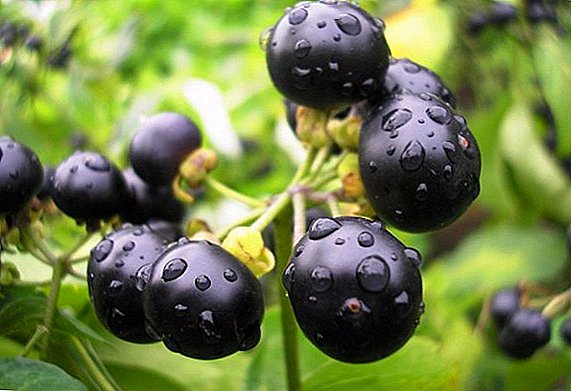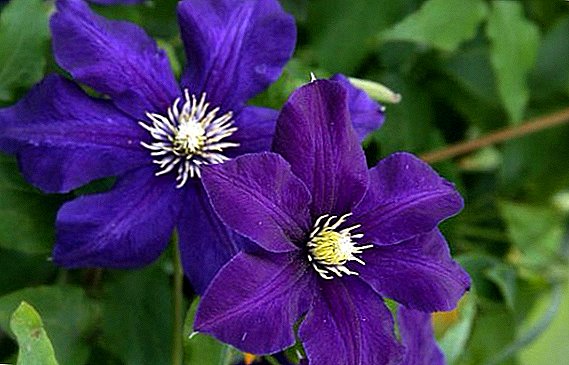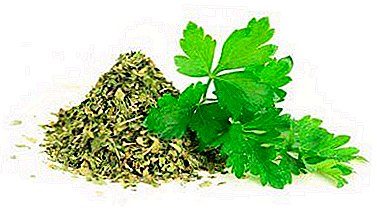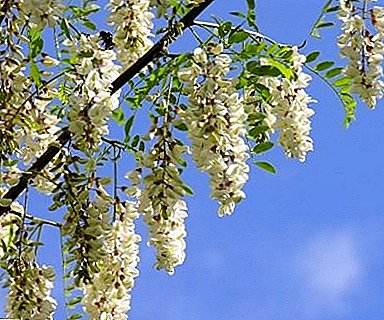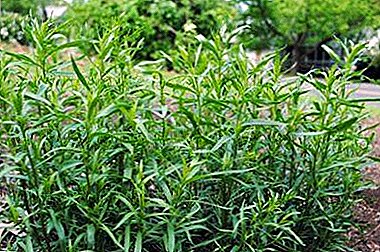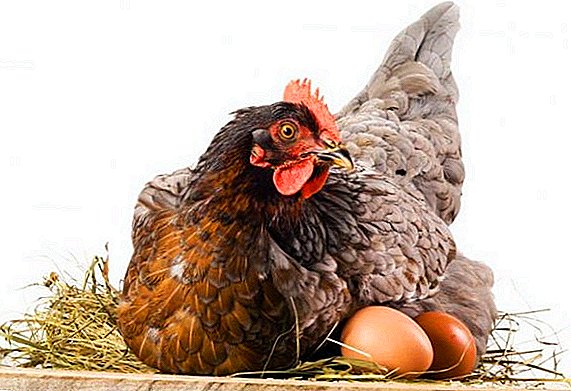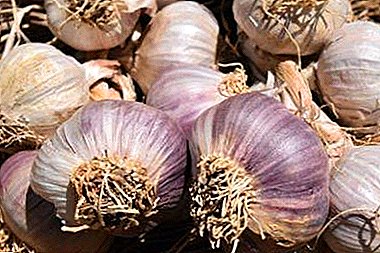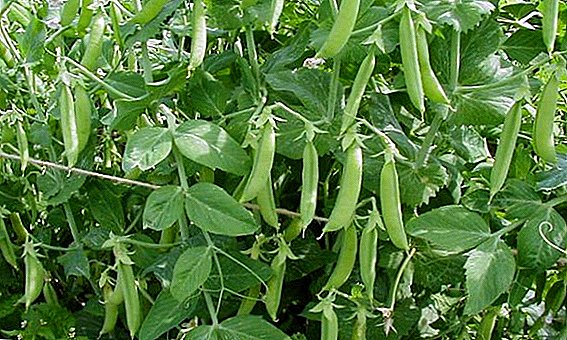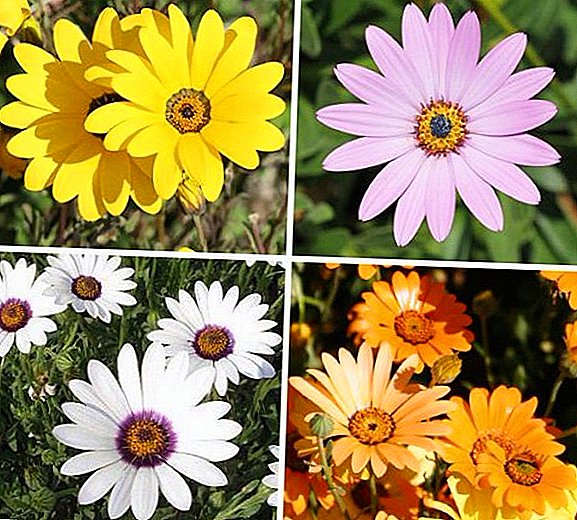
If you require a bright, eye-catching look for a flowerbed, but at the same time undemanding flowers, dimorphotech is recommended by demanding experienced gardeners. In this article, you will learn what the varieties of this plant are, as well as familiarize yourself with the requirements for planting and care. Increasingly, this flower is grown in the middle lane.

Description
Herbaceous (shrub) annual or perennial, with ascending, as well as erect stems, abundant flowering - all this is about dimorphoteca. This flower reaches a size of 40 cm. You can easily distinguish the dimorfoteku by leaflets - they are narrow with cloves or separately pinnate, the leaves can also be pubescent. They are collected in the rosette or grow alternately on the stem. Due to the fact that the dimorofote grows on loose gravelly soils, the moisture in which accumulates deep - the root of the plant is a long rod, with a fibrous end.
The flower of this plant is represented by the apical basket, which grows one at a time, 8 cm wide, which grows on a rather long, dense peduncle, with a smooth shiny flower of a reed subtype (they can be yellow, orange, white or burgundy). In the middle of the flower there is a velvet lilac tubular center, which can be terracotta, yellow or lilac. This plant flowers reveal in sunlight, which protects them from rain or night moisture. Despite the fact that each inflorescence lives only 4-5 days, new buds quickly grow on the site of the dead flower, so flowering lasts up to two months, as a rule, these are the last months of summer.
Did you know? The name of the genus of these plants comes from Greek: dimorphos, which can be translated as "has a double form" and theke, which translates as "capacity".This name reflects the peculiarity of the plant, which has fertile flowers of reed or tubular shape, but they produce two types of fruit - these are seeds of a wedge-like, slightly curved, ribbed form, as well as smooth, not convex seeds, which have a large border in the middle thickened along the edge. Both varieties of plants grow identical flowers. Seeds of dimorphology are large, up to 7 mm, in one gram there are about 500 pieces, seed germination persists for 2-3 years.

Main types
The genus of these plants includes more than two dozen species. The most common in the gardens are two varieties, this is the excavated and rain dimorphological libraries. Also known is the hybrid variety, which includes many hybrid species.
The rain dimorphote is a lower annual herb from 15 to 20 cm in height. The leaves are long, pubescent, the stems are straight and creeping. Baskets grow on high peduncles with white or cream flowers on the upper side, and bottom with purple reed flowers. In the center of the flower is a beautiful golden mean. Both the leaves and the flowers of this species smell nicely.
Extrusive dimorfote - This plant is 40 cm tall, which grows one year, it has upright and branched stems with notched fragile leaves that are elongated and pubescent. Inflorescences are a basket with bright orange petals and a black-brown middle. The most used variety of this subspecies is the Polar Star. 
As a result of selection and crossing of these two species, a hybrid dimorphide library was derived. The stalk is densely branched, reaches a height of forty centimeters, the leaves on it are next toothed edge or whole. The inflorescences are large with a yellowish middle and outer petals of various colors, for example, light blue, bright orange, rich red or pale pink.
Did you know? The homeland of this beautiful flower is South America. Many main varieties have been cultivated since the 18th century.
Landing
This plant is best suited drained soil, filled with a large number of organic fertilizers. Dimorfote itself will feel comfortable in not very illuminated areas, but do not forget that dimorphotech blooms in the sun. Planting and care of this plant does not require a lot of strength if you choose the right place in the open field and adhere to certain rules.
Dimorfoteka is resistant to drought, so you need to plant it in a place protected from rain. Another bush is wind resistant, so you can plant it in a well-blown place. Try to shade the plant a little in a very intense heat. Since the plant is self-filling, the seeds can be collected as early as August, they are abundantly formed in boxes in this period. The main thing is not to miss this moment, as the seeds will spill out. 
You may also be interested in a selection of the most popular annual asters.
Rassadny way
Seeds of this plant are sown in greenhouses (greenhouses or on the window sill) in the middle of spring. You can also sow it in boxes during the formation of three leaves. However, the ideal option would be to place 3 seeds in each pot separately, in such pots there should be a nutritious mixture of organic fertilizers, garden soil and sand. The seedlings have superficial roots, for this reason it is easily injured during transplantation. In the case of planting seedlings from pots, the root system takes root normally.
Seminal method
Seeds need to be sown in free ground at the end of the spring season, only sprinkled a little earth. Spread the seeds evenly over the bed, if the plant rises very often, it is necessary to thin it out so that 15-20 cm between them remains. If you make everything the sprouts appear in 2 weeks.
Important! When a sprout has 3 leaves, you need to prepare a weak solution of the Zdrav'en fertilizer at the rate of 0.5 g per 10 l of water, and feed the sprouts. This will allow young weaker plants to gain strength and grow faster.

Further care
It is necessary to water a dimorpotek a little, but with regular periodicity, if the topsoil dries out. From the very beginning, careful weeding is needed, when the bush grows, it will itself suppress them. If you want to grow this flower as a perennial, before the winter cold in the autumn period, transplant the bush into a pot and keep it in the house until the beginning of the warm season, then take it out again.
Important! The flower is not recommended to fertilize with mineral forage with a complex composition, as they can provoke the growth of greenery, not flowers.Phosphate-potassium fertilizers (superphosphate and potassium nitrate) are best suited for these purposes, which are used in small portions when buds are formed. This plant of the Astrov family is not very capricious and does not require careful maintenance, which is why it gained popularity among gardeners. Once you have planted a dimorfotek you will grow it for a long time
Breeding
This plant propagates with the help of seeds, which need to be collected in early summer in several visits, as the flowers ripen unevenly and the seeds can crumble, which will lead to self-sowing. In order to preserve the decorative growth, select seeds from large flowers. 
Use in landscape design
These flowers look great in rockeries made in well-lit areas. They are also well suited for balcony boxes, as they survive through the heat, and a long lack of water. You can also drop them near the curb or just a group. The dimorfote looks beautiful alongside bright annals - venidium, ageratum, heliotrope, acroklinum, arctotis, pelargonium and petunias. If you have a rocky garden, plant this flower next to other drought-resistant plants.
Flower dimorofote is a magnificent and beautiful decoration of every garden or flower bed. It is drought-resistant and undemanding to the environment, cultivation is made from both seeds and seedlings. Plant it near your home or directly on the balcony, then it will delight you every year.


